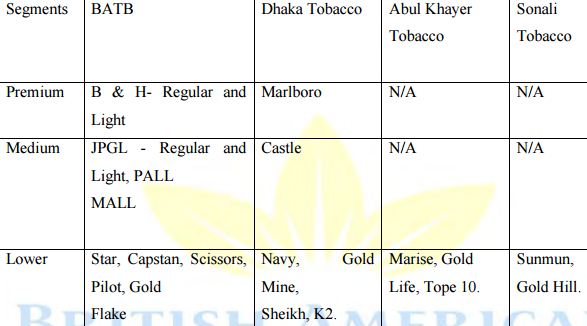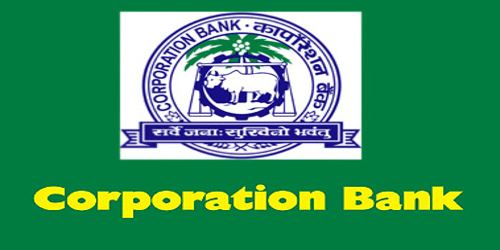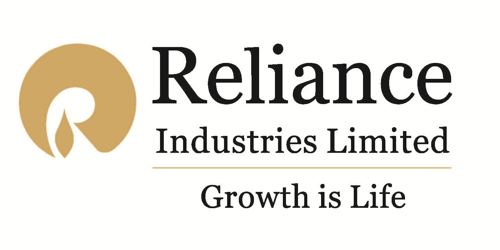Manpower Rationalization project of
British American Tobacco Bangladesh
Tobacco Industry of Bangladesh: Bangladesh is among top five countries in tobacco consumption. According to Matthew Myers, president of CTFK, tobacco industries were eyeing Bangladesh market like the other developing countries for their future profit making after rich countries imposed stiff tobacco controls. So these vigorous implementations of new laws are truly matters of life and death for Bangladesh. (Hasib, 2014)
Tobacco industry of Bangladesh is run by two main industries – Bangladesh Cigarette Manufacturers Association (BCMA) and Bangladesh Biri Manufacturers Association (BBMA). (ADI, 2013).
Specific objective:
- gaining an understanding on how BAT is doing this job analysis process and how exactly they are doing this manpower rationalization program.
- to get all the methods available to do this job analysis and manpower rationalization.
- presents some recommendations that i came up with to get the best possible way of preparing this job description for BATB.
Among the entire cigarette companies, British American Tobacco contributes most to Bangladesh’s economy. This chart shows the contribution percentage of tobacco companies

Brands
“Brand” is basically a name, product, service, or concept that is publicly distinguished from other products, services, or concepts so that it can be easily communicated and usually marketed. According to David Ogilvy, the intangible sum of a product’s attributes: its name, packaging, and price, its history, its reputation, and the way it’s advertised. (Rouse, 2010) Brand is a name which gives a reliance of quality product. As the customers’ taste varies and also there is different prices of products, brands are also different. One common characteristic is in every segmented market the different brands are almost at the same prices. The operative brands in Bangladesh tobacco industries are given below.
Segments of cigarette

So far the various segments of the research has been discussed, now the next part describes the analysis of research where the various assumptions have been tested to gain the fair idea of brand dilution and product quality.
SWOT analysis:
The SWOT analysis is a commonly employed framework in the business world for analyzing the factors that influence a company’s competitive position in the marketplace with an eye to the future. However, the SWOT framework can also be usefully applied outside of the pure business domain.SWOT analysis is important for any organization to find out the factors important to the operation of a business in the environment, both internal and external. The internal factors help to find out the strength and weakness; the threats and opportunities can be comprehended by scanning the external environment. (Lizza.A, 2005)The SWOT analysis of the cigarette industry is given below:
Strength:
- Comparatively less Competition than other industries
- Promotional Activities are banned which saved their huge amount of money and they can use this money to other development.
Weakness
- They cannot go for massive promotion
- Sensitive and harmful product which can be banned anytime
- The law requires graphic health warning to cover atleast 50% of main display
- Smoking is prohibited in indoor public places and workplace
Opportunity
- Young generation is more tend to have cigarette than biri.
Threats:
- Tobacco advertising as well as discounted tobacco product supply is prohibited
- Sponsorship for tobacco company is strictly restricted
Company Analysis
BAT Bangladesh started its operations in this sub-continent in 1910 as Imperial Tobacco Company Ltd. After the separation, Pakistan Tobacco Company (PTC) came into presence with its head office in Karachi in 1949. PTC’s East Pakistan office at that time was situated in Armanitola, Dhaka and ultimately moved to Motijheel, Dhaka. After independence, Bangladesh Tobacco Company Pvt. Limited was formed in 1972 with British American Tobacco holding majority shares. In March 1998, Bangladesh Tobacco Company changed its name and identity to British American Tobacco Bangladesh pronouncing its common identity with other operating companies in the Group. British American Tobacco Bangladesh is one of the oldest and largest multinational companies operating in Bangladesh. The British American Tobacco Group holds65.91% share in the Company. The Government of Bangladesh owns 26.57% through several of its agencies, while 7.52% is owned by other shareholders. It is a public company listed on the Dhaka and Chittagong stock exchanges. The Board of Directors has nine members – a Non-Executive Chairman, four Non-Executive Directors and four Executive Directors. We are also a leading business organisation in the industrial sector employing more than 11,000 people directly and a further 60,000 indirectly as farmers, distributors and suppliers. We have business contracts directly with approximately 45,000 registered farmers who produce high quality tobacco leaf.
Worldwide operations of British American Tobacco Group:
British American Tobacco Bangladesh is a member of the British American Tobacco Group which is UK based and one of the leading multinational companies in the global tobacco business. British- American Tobacco has been involved in this operation for more than 100 years. The business was formed in 1902, as a joint venture between the UK’s Imperial Tobacco Company and the American Tobacco Company founded by James “Buck” Duke. Despite its name, derived from the home bases of its two founding companies, British American Tobacco was established to trade outside both the UK and the USA, and grew from its roots in dozens of countries across Africa, Asia, Latin America and continental Europe. More than a billion people across the globe enjoy smoking tobacco. Among them one in every seven chooses a British American Tobacco brand.
STRUCTURE OF BATB:
BATB is a well-known public limited company ruling the tobacco market of Bangladesh. Overall actions of the company are directed by the “Board of Directors” and Executive Committee (EXCO). The Board of Directors is consisted of 8 directors having the chairman as head of board. Chief Executive of British American Tobacco Bangladesh is the “Managing Director” who is also the director of the Executive Committee. All the functional departmental heads are member of this committee. Different departments such as supply chain management, HR, CORA, Finance, Marketing, Legal and IT have different structure.
Vision of BATB
Vision of BATB can be described both quantitative and qualitative way. Quantitatively, the company seeks volume leadership among the international competitors. In the longer run perspective, they value leadership. BAT recognizes that it is adult customers who controls the market and that leads them to consumer driven strategy.
Qualitatively, BAT wants to be recognized as industry leaders and to be the partner of first choice for government, NGO‘s, investors and potential employee recruits. The company will also do this by being a responsible tobacco group, with sustainable business, outstanding people and superior products.
Functional departments:
British American Tobacco Bangladesh has several functional departments that are integrated to give the best output for the organization. The following diagram shows the top management.
Different functional departments have different structures according to their job and activities. BAT maintains a up-to-date organizational structure headed by Managing Director. Managing Director is the operational head and national sales manager. Every departmental heads notifies him what they carry out through their functions with the help of line managers. Some other positions of the organogram are directors, regional manager, secretary, assistant manager, area manager, territory officer, supervisor and other employees. It has seven departments with two supporting departments. The “Board of Directors” and Executive Committee (ExCo) govern the overall activities of the company. The Board of Directors is responsible for protecting the rights and interests of all shareholders and is held accountable for the overall management of the entity.
The Board meets at least 6 times a year and makes decisions on key matters. The Board is liable for the overall system of internal control for the company and for reviewing the effectiveness of these panels. The system is designed to manage risks that may impede the accomplishment of the company’s business objectives rather than to eliminate these risks. (Jannat, 2015)
Major functional areas are:
- Corporate & Regulatory Affairs
- Finance
- Human Resource
- Legal
- Supply Chain
- Leaf
- Information Technology
- Marketing Department
Employee Relations & Welfare at BATB:
There are two factories in the country of British American Tobacco Bangladesh. In Kushtia, there is a Green Leaf Threshing factory, and the main cigarette manufacturing facility is situated in Mohakhali, Dhaka. Being a responsible corporate citizen, BAT Bangladesh abides by all the valid laws and principles of the country. It employs more than 1200 people directly, and provides them with many benefits. Along with the extrinsic rewards, BAT Bangladesh also looks into their development by providing them with relevant trainings to make their job more effective.
We take on apprentices as well, and invest in their learning so that they can be retained at the end of their apprenticeship. BATB employees are paid a very profitable package, compared to other local and multinational companies. The components of the total package include the basic salary, house rent allowance, conveyance allowance, family medical allowance, children education allowance, entertainment allowance, meal assistance allowance, smoking allowance, shift allowance, tour allowance, annual bonus, festival bonus, performance bonus, leave fare assistance, odd hour conveyance, city allowance and washing allowance.
- Two sets of high quality uniforms each year (pants, shirts, shoes and socks). Every alternate year they also get a set of winter clothing (pants, shirts and jackets)
- All the employees and workers get food in the canteen when they are on duty. The canteen knows no hierarchy, and is not a place for discrimination; the Managing Director of the company and a factory workers take the same food in same plates and in same place
- One umbrella every year
- Medical treatment in good hospitals; no bar on expenditure
- High standard dispensary, providing full time coverage with a doctor (MBBS) and an ambulance
- Supplies of medicine as per the prescription made by internal /external doctors
- Various cultural activities are arranged for the employees etc.
Project: “Manpower rationalization
Manpower rationalization becomes a necessary when there is excessive of workers and company is planning to lay off workers or replacing workers by automated machines to make the process more effective as well as cost saving. It is a careful exercise where SWOT analysis need to be done on employees to find out in which aptitude test will they actually will suit in. outsourcing has become very popular nowadays. It is like to temper the expansion of work force and reduce management overhead but to assign accurate job to that least number of and best required employees, manpower rationalization has become mandatory because this will keep the organization from growing big in the wrong areas and becoming effective.
There are some obvious strong reasons behind doing this manpower rationalization. It helps to focus on the area of company’s core competences. So the resources do not get diverted to other supportive activities.
Importance of Manpower rationalization:
Cost saving:
The purpose of doing manpower rationalization is to cut a sizeable cost for companies by identifying unnecessary jobs, doing in best possible ways even in lower cost. Moreover, it helps define how much outsourcing is necessary to run the company and reduce excess of workers which helps to cut cost.
Organizational efficiency:
By smoothing the process of major organizational changes, business innovation, effective procedure, skills and technologies it makes the system more efficient.
Time saving:
Manpower rationalization does not only save cost and increase efficiency of production but also it does make the whole process time saving by doing time and motion study on workers. It ensures the best utilization of time that workers give to the organization
DEVELOPING THE WORKFORCE RATIONALIZATION PLAN
A valuable rationalization plan must be built on precise and relevant data and must consider the full range of rationalization alternatives, not just dismissals. The blueprint of a port employment rationalization plan is one the most important phases of the overall port reform process. To be designed correctly, the plan and associated programs should be based on thorough, reliable information.
Before developing a rationalization plan, the labor reform task force should assemble the following information:
- Prepare major plans and short, medium, and long terms strategic goals.
- Forecasting required activity levels.
- Collect demographic information about the current workforce like data on employee age, marital status, number of dependents, level of education, length of service, and accumulated benefits
- Have a clear knowledge on current staffing levels by operational, administrative, and management categories, and descriptions of job requirements.
- Estimates of minimum staffing levels by operational, administrative, and management categories, and descriptions of new or modified job requirements.
- Good knowledge on national and local laws, regulations, and policies relating to labor rationalization.
- Other relevant employment agreements that describe work rules, compensation, benefits, training, contracting out rules, exclusive staffing provisions.
- Alternative training and development programs of workers who will be seeking alternative employment.
- Existing government and private organization’s capacity to provide training at the required levels.
In building a proper labor rationalization plan, assessing the local labor market situation and conditions will be as important as assessing the specific enterprise being restructured.
Too often, labor rationalization leads to extensive dismissals. Workers can be rationalized in a number of ways, however, and the urgent dismissal of employees is not always mandatory. In a climate of cooperation and mutual respect, labor and management have been able to implement agreements involving flexible work arrangements that preserve jobs or reduce the workforce through means other than involuntary dismissals. Some of these arrangements and measures include:
- Normal abrasion of the labors occurs as a result of retirements, deaths, or resignations.
- Part-time employment, flexible working hours, reduction in working hours, variable work weeks, job sharing, and overtime restrictions.
- Work rotation can also be a very good option.
- These alternatives are careful deliberation in the progress of a labor rationalization program.
Elements of a Staff Retrenchment Program
Measures such as the flexible work arrangements may prove insufficient to attain workforce reductions needed to make the port enterprise commercially feasible or attractive to new investors. To be viable, this kind of solution ought to be the result of negotiations with trade unions or workforce representatives. Such programs typically include various measures aimed at cushioning the unfavorable affects workers may suffer as a result of dislocations.
The main components of a staff retrenchment program normally include:
Compensation, with incentives for early retirement and voluntary separation:
Retrenchment programs often permit employees to retire with either full or reduced pension benefits at an earlier age than normal. Numerous public enterprises have either reduced the minimum retirement age by five years or added five years to length of service. Financial incentives are normally calculated based on the number of years of service, each year of service entitling the separated employee to one month’s salary, with a ceiling of possibly 24 months of wages.
Compensation for involuntary separation:
When the targeted workforce reduction is not reached through voluntary programs, and workers have to be dismissed or laid off, they normally receive a lower severance payment, Provision of training and retraining:
The training and retraining component of the retrenchment program is aimed at facilitating the return of displaced workers to gainful employment. Experiences in various countries, however, have revealed that in many cases only 20 percent of the displaced workers take advantage of the retraining programs being offered.
Guidance and assistance in job searching and outplacement:
This component is closely linked to retraining and is aimed at assisting displaced personnel who will be seeking employment. However, displaced personnel should be able to take advantage of this service regardless of whether they have been retrained.
Different aspects of my job performance:
In order to complete my graduation in Bachelor of Business Administration degree from BRAC University I was supposed to do three months internship. There I was taken under supply chain department but my job was not like regular job of other employees of supply chain. Throughout my internship program I have been assigned to complete a project called “Manpower Rationalization. This is a project to design a new work model that can be more effective than the current work model of workers. I did all my work under supervision of Nazimuddin Mahmud, Engineering and site service manager. British American Tobacco including its subsidiary companies aims to apply the best international standards to practices on taking any decision. So my supervisor instructed me to get proper knowledge on what I was doing there.
- On my very first week I met different employees working in same field who can help me out to solve my upcoming problems. I met manufacturing manager, factory supervisors, cell managers, shift mangers and senior technicians. Later on during my internship period these people help me to get my job done perfectly.
- Then I was given different task to get to know about all the machines of factory. As I am not from engineering background so they adopted different methods to make me know the machines and how do these machines work. I was also got introduced with some factory workers who were told to help me in any way.
- After knowing people and machines my supervisor gave me a short brief about my project and gave me full freedom to do it on my own way but he wanted to have accurate information about my work and what I am doing on daily basis. My job was basically to change the work model of factory workers. They wanted to have a more effective and operative model that can be more productive. So prepare a new work model I needed to do time and motion study on workers.
- Initially I was a bit confused but after getting on floor I prepared myself and started working step by step. I used stop watch to measure how much time they each worker takes to do a specific task. I was closely watching their activities and put effort to understand what the core parts of their whole work process are.
- I observed every machine to collect data by doing this time and motion study. Every day I used to spend 2 hours on each machine to observe individual’s work that they perform in every machine individually.
- After collecting all the information I analyzed the data on MS Excel. i did average of time they take to perform similar job and find out the best possible value or time they need to do that specific task.
- After doing research I prepared a list prioritizing each jobs. Some jobs are very necessary and need to be done more number of times than existing frequency and on the other hand some jobs are completely unnecessary. So on basis of this prioritized jobs I prepared a new job description that will help to make new work model.
- While doing all these works I used to report my supervisor on daily basis. He monitored me all the time so that I do not get misguided from the right way of doing my job.
- After working under Nazimuddin Mahmud I was assigned to NaemIbne Rahman who has been working on this project for about 1 year. He reviewed all my work and then started showing another phase of this project. That was a new challenge and new work which made the work more interesting.
- While working under supervision ofNaemIbne Rahman I got to know more detail about this manpower rationalization. He gaves some new task and asked me to some research that helped me on this project.
- Apart from all my assigned tasks I did some other works like Bangla typing, MS- Excel (Data entry, Vlook-up, filtering, Hyperlink) , monitored workers jobs, (need to add more)
Recommendation:
After doing the literature review I have got proper idea on how many ways are available to do job analysis, what resources were there in BATB and how actually they could have designed the process a bit differently to make it more effective.
- BATB’s analysis was not only limited to job based but also varied from person to person which demanded to have person based analysis. Person oriented job analysis can be of two types- position analysis and personality analysis. Recently a form was introduced in order to conduct such analysis- PPRF form or Personality Related Requirements Form. Developer of this form argued that selection strategies usually evolve from both job based analytical information and person based analytical information. (Raymark.et.al; 1997) BATB could have used position analysis questionnaire to analyze jobs in terms of human attributes, skills and abilities needed on required job. As selection strategies usually develop from an understanding of job and person based analytical information, BATB should have focused on cognitive and psychomotor aspects of jobs. The PPRF from consists of 112 items on 12 position requirements such as leadership, friendly disposition, general trustworthiness, emotional stability and desire to generate ideas etc. Although empirical evidence is limited at this moment but this PRRF’s 12 position requirements are useful in differentiating among jobs. BATB did this study on surfaces of performance which required different predictors and needed multivariate framework in evaluation or selection tests and for that Personality based analysis and position based analysis both were necessary to be implemented.
- Other than this approach they could have followed FOJA method because this method is designed on basis of current scenario of organization where many organizations require downsizing and reorganization which leads to redesigning jobs. Redesigning is essential because traditional job analysis may not be fitting or appropriate for new job criterions. BATB was doing this research to design a future job on basis of current jobs.
- From my perspective if they had followed seven job analysis methods that would have given more accurate value though there was not sufficient information to apply all the seven methods. Among all methods they had enough information to do position analysis through questionnaire, job element analysis, critical incident technique, functional job analysis, task inventory-CODAP.
- They did task based job analysis they should have followed in more systematic way. Nothing was designed earlier, we had to proceed randomly. A proper structure or guideline was necessary to make the whole process easier.
- It would be more effective if they had hired some experiencedpeople who have very good knowledge over this because this project is run by some existing employees who are already engaged with their regular scheduled jobs and hardly get time to do such research.
- Moreover they should have observed CC TV footage because when we physically go to the floor to observe worker’s job, they get more conscious and shows the work that they want us to see. If we had used CCTV footage, we could get to see what the workers actually do in floor being unaware of observing and the outcome would be more accurate.
Conclusion
BAT always tries to ensure value addition at every steps of the supply chain. BAT must supplementary focus on price, quality and performance of their product lines and brands to hold leading position in this competitive in the industry. Now-a-days people are becoming more conscious of the health hazards of smoking, but customers who smoke on a regular basis face tremendous difficulty in giving it up. However, the increasing numbers of activities of antismoking supplicants affect much on the regular smokers. BAT should contribute extensively on research and development for better variety of tobacco leaves that will be less injurious for health and more cost effective for the customers. On account of advancement in microbiology, BAT should involve scientists more frequently to come up with innovative ingredients that eliminate the harmful qualities of tobacco and only the useful qualities are available for consumption. This can trigger a complete revolution and can be sold as some product of great herbal value. BATB is not only concerned about their product they also make sure whether their workers are getting healthy environment, good quality product and safety during their shift.
















